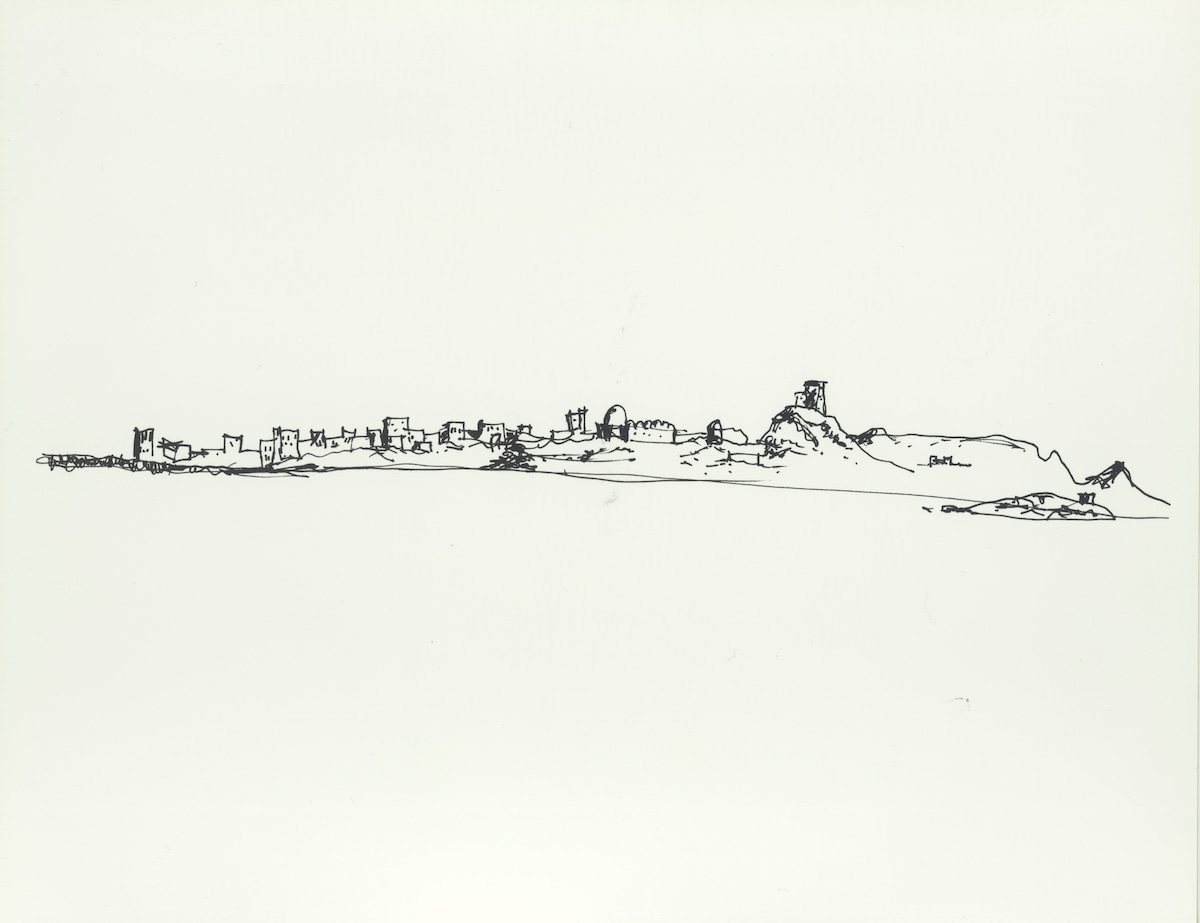
Written by Bryan Kim
Facing the Red Sea, the Tihāmah is a region of coastal lowlands on the western Arabian Peninsula. Encompassing areas of Saudi Arabia and Yemen, the distinctive region combines culture and history from the interior of Arabia with influences from Africa and the Indian Ocean.
In 1981, the multi-disciplinary Tihāmah Expedition brought together artists, architects, and researchers to survey the flora, fauna, architecture, archaeology, ethnography, and music of North Yemen. Founding partner Steven Ehrlich of Ehrlich Yanai Rhee Chaney Architects joined the independent research project to study “architecture without architects,” using sketches rather than photographs to document the region.
Characterized by courtyards, symmetry, interlocking space, thick walls, natural light and veiled spaces, the architectural styles in the Tihāmah are varied and rich in detail. Designed and built without professional architects, these buildings are contextual and custom, formed by available construction materials, historical influences, climate and personal preference.
The following images show Ehrlich’s original drawings, which were eventually included in a book documenting the project.
 Sketchbook cover and first page
Sketchbook cover and first page
.jpg?width=617&name=Ruined%20house%20of%20Shirh%20Abdu%20in%20al-Luhayyah%20(converted-optimized).jpg)
Ruined house of Shirh Abdu in al-Luhayyah
.jpg?width=1000&name=Al-Luhayyah%20from%20the%20sea%20(converted-optimizedl).jpg)
Al-Luhayyah from the sea
.jpg?width=1000&name=Small%20mosque%20in%20al-Luhayyah%20(converted-original).jpg)
Small mosque in al-Luhayyah
.jpg?width=1000&name=Fort%20in%20Nukhaylah%20(converted-optimizedl).jpg)
Fort in Nukhaylah – overlooking a lagoon, the solitary structure is well preserved
.jpg?width=625&name=Courtyard%20at%20the%20fort%20in%20Nukhaylah%20(optimized-converted).jpg)
Courtyard at the fort in Nukhaylah
%20Plans%20of%20Zab%C4%ABd%20s%C5%ABq%20.jpg?width=1000&name=(Merge%20Orginal)%20Plans%20of%20Zab%C4%ABd%20s%C5%ABq%20.jpg)
Plans of Zabīd sūq - an organic layout of shops and narrow streets


Section and plan of al-Dayba’ mosque – a series of small courtyards lead to a mosque under a double cupola, all built of brick and plaster
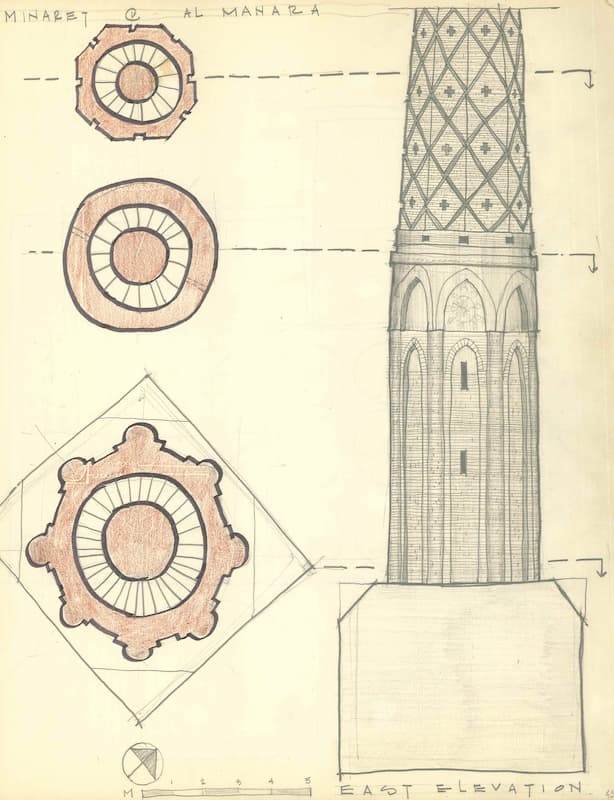
Elevation and plans of a minaret at al-Manara
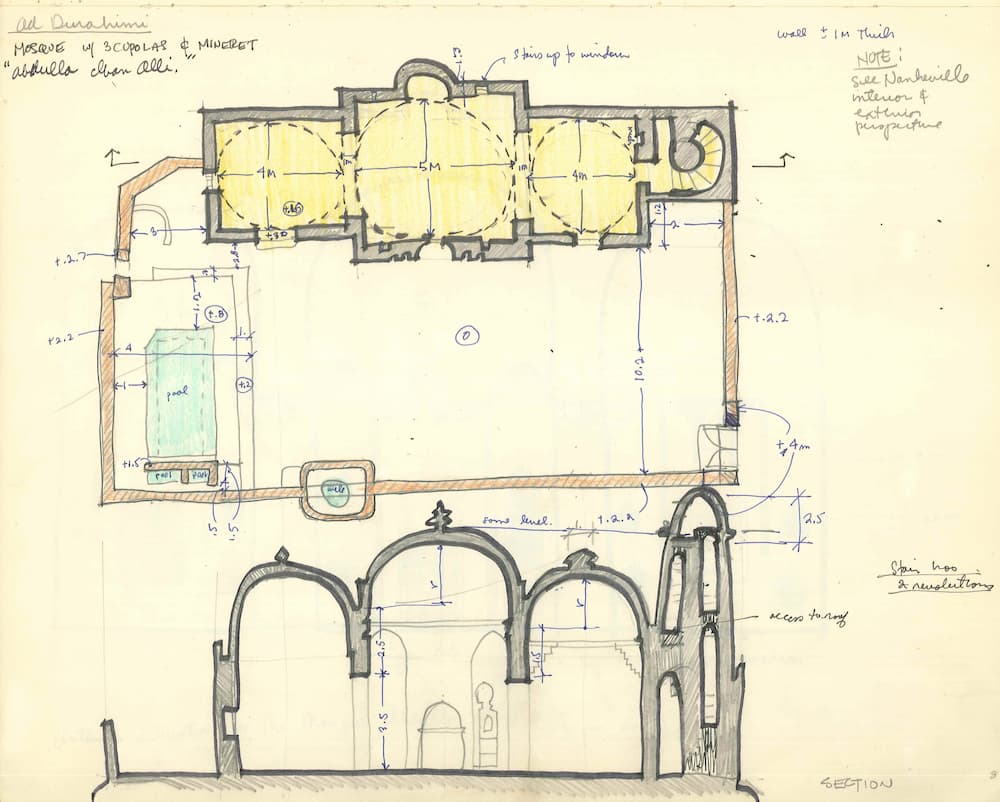
‘Abdullāh ibn ‘Alī mosque at al-Durayhimī – a rectangular prayer hall with three cupolas, brick walls and smooth plaster on the domes.
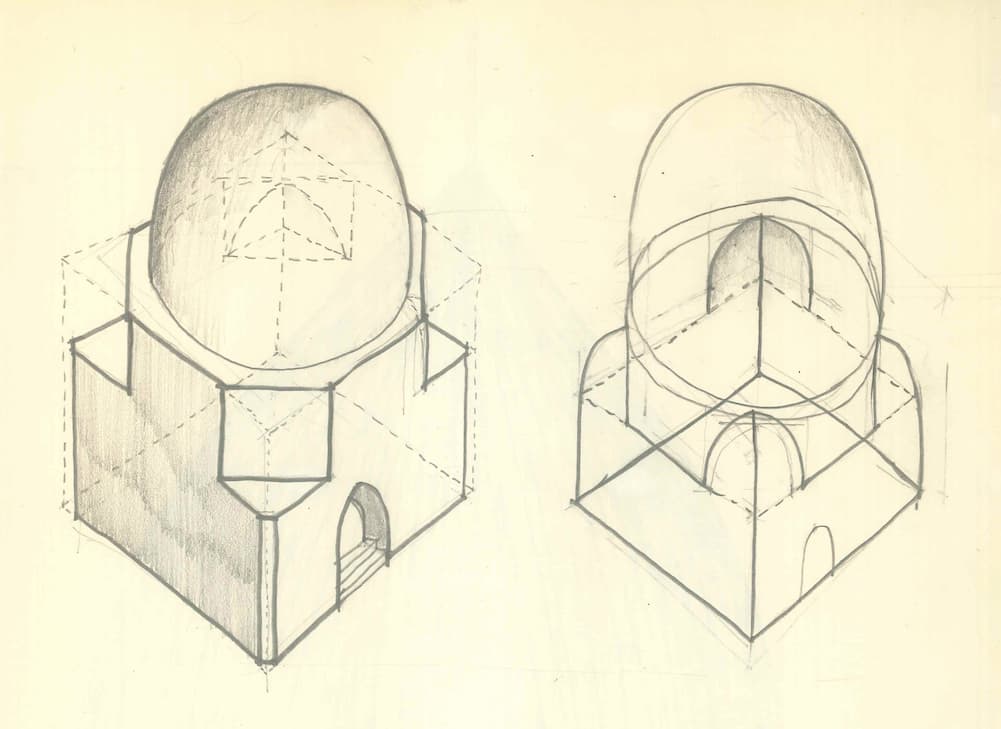
Axonometric view of a mosque and tomb at Bayt ‘Atā’

Al-Dūwaydār mosque in Zabīd – section showing the courtyard between the mosque and the school with the minaret over the entry, all elaborately decorated with brickwork and plaster


%20Family%20Compound%20at%20al-Mutarid.jpg?width=1000&name=(Merged)%20Family%20Compound%20at%20al-Mutarid.jpg)
Family compound at al-Mu’tarid – sharing the area with four members of an extended family, the head of the family’s home is sketched in elevation and section. Made of mud and thatch, the home is circular in plan that rises to a conical roof hung by a center pole. Providing a cool interior, the home is intricately decorated with a hand painted pattern surrounding the top third of the roof. The sequence of construction of the round, mud and thatch houses is shown above.
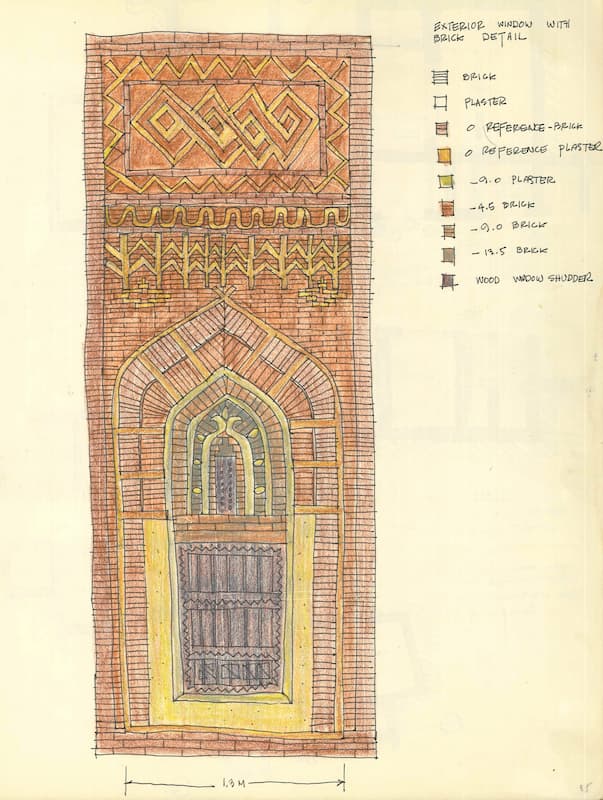
A window from a house in al-Tuhaytā – mud brick courses, plaster details and a wooden shutter define the decorated exterior window
A Critical Experience
The Tihāmah Expedition became one of the influential facets of Steven’s six years of living, working, and traveling in Africa. Falling outside of the usual modernist education, these real-world experiences acknowledged a more inclusive and responsive approach rooted in specificity and time.
Lessons seen in the Tihāmah—including our integration of interior courtyards and unique, local materials in residential projects—has shaped our design philosophy and aesthetic ever since.
Los Angeles and San Francisco are centers of innovation and technology, embracing new materials and explorations in architecture. However, by building appropriately for climate, customs and context, the impact of this short time on the Arabian Peninsula continues to be explored and respected in the work of EYRC.

Written by Bryan Kim
Bryan Kim, RA is an architect and project manager at EYRC Architects. He has been involved in a variety of project types at the firm, ranging from educational campuses to creative office projects. Bringing a keen design eye and excellent communication skills, Bryan quickly becomes a favorite of EYRC clients.
